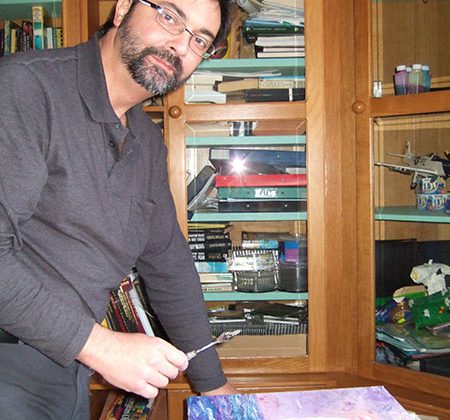New modalities for cancer therapy
Maurice Cauchi
The classical ways of combating cancer have included surgery, radiotherapy, and chemotherapy. More recently, immunotherapy has been added to this armamentarium on the premise that cancer cells differ antigenically from normal cells, and therefore can become the target of immune cells or specifically (mono-clonally) engineered antibodies.
Apart from surgery, which aims to remove as much of the tumour as technically possible, all other therapies assume that tumour cells are destroyed preferentially compared to normal tissue, that is, the therapeutic ratio is acceptable, and that in spite of side effects, which can often be not inconsiderable, the benefits derived from these therapies are significant.
An enormous amount of work has gone into understanding the genetic structure of tumours with a view to determine what factors control tumour growth. It is now well known that genes can be turned on or off depending on circumstances. Switching on tumour stimulating genes or alternatively switching off tumour suppressing genes could result in tumour formation. This gives hope for future control of tumour growth.
Another approach, particularly in the field of leukaemias, has been the search for factors that control bone-marrow derived cell multiplication. Factors like GM-CSF have been used to coax leukaemia cells to behave more like normal bone-marrow cells and thus be modulated back to respond to normal control mechanisms.
A new approach to cancer therapy which was the subject of a recent trial report presented at the 2013 Society for Melanoma Research Congress in Philadelphia, gives hope that a new, completely different approach to cancer therapy can eventually be made available. This is based on the concept that certain viruses can specifically attack and destroy melanoma cells. The interim analysis of this phase 3 pivotal trial shows that there was significant, albeit not dramatic improvement in longevity in patients with melanoma when treated with a specifically genetically engineered virus.
This concept (referred to as ‘oncolytic immunotherapy’) involves the injection of a virus into patients with melanoma. The virus used for this purpose was a modified herpes simplex virus type 1, an attenuated virus which does not cause herpes, but which has the capacity to infect tumour cells, where it multiplies and eventually destroys tumour cells. This agent (referred to as T-VEC) is the first virus of this type that has been used for this purpose. Other viruses (including a coxsakie virus) are also being investigated for this purpose.
The concept that viruses show significant tropism is not new. Viruses often have a tendency to attack a specific organ. There is no doubt that certain viruses prefer to settle in, and attack preferentially certain cells (for example hepatitis viruses, human papilloma virus, viral meningitis, and lymphoma-related viruses). It is therefore quite conceivable that tumour cells are sufficiently distinct from normal parenchymal cells to be the target of specific viruses.
One must be careful not to be too optimistic about such novel modalities of therapy, particularly since, as in this case, they are still in the early stages of development.
The concept that specific viruses can attack and destroy a particular kind of cell is not new. Perhaps the most specific example of this process can be seen in the destruction of T-helper lymphocytes which are attacked by the HIV virus. In this situation, a specific virus has a particular tendency to latch onto CD4 receptors on T-helper lymphocytes and these are slowly and irretrievably destroyed. This explains the marked immune deficiency which is a hallmark of patients with AIDS.
To make use of this principle for cancer therapy, one has to identify both a specific receptor on the target cell (i.e. cancer cell), as well as ensure that a virus which is not otherwise pathogenic, can home onto these receptors to destroy the cell.
As is well known, there is no such thing as ‘cancer’ but a whole range of cancers which vary quite markedly from each others. It is most unlikely that receptors for viruses which present on melanoma cells can be found also on other tumours, but the results of the above investigations give a clear indication that this is a possibility.


